The
Pokémon Trading Card Game (
Pokémon TCG) is a collectible card game based on the Pokémon video game series, first introduced By media center in October 1996 published by Media Factory, then North America in December 1998. It was initially published by Wizards of the Coast, the company that produces
Magic: The Gathering.
It is one of Nintendo's last remaining strong links to its heritage as a playing card company.
Gameplay

A game of Pokémon TCG in progress
In a game of Pokémon TCG, players take on the role of a Pokémon trainer, using their creatures to battle. Players play Pokémon to the field and use their attacks to reduce the opponent's HP. When a Pokémon's HP is reduced to 0 it is knocked out and the player who knocked it out takes a Prize card into their hand. A player may win the game in 3 ways; by collecting all of their prize cards (initially 6, some cards can increase this), if their opponent runs out of Pokémon on the field or if their opponent must draw a card from their deck but there are no cards to draw.
Players begin by shuffling their decks and drawing seven cards. Both players check to make sure they have at least one Basic Pokémon in their hand. If not, they must reshuffle and redraw and the opponent may draw one additional card. Once both players have at least one basic, they both play 1 or more Basic Pokémon to their play field, 1 in the Active spot, and up to five on the "bench" (representing the 6 maximum carry limit from the video games). Players then take the top 6 cards of their remaining deck and place them to the side as their Prize Cards and flip a coin to see who goes first. (Note: Many players use dice instead of coins, even numbers representing Heads, odd numbers representing Tails.)
Play alternates between players who may take several actions during their turn including playing new Basic Pokémon, evolving to higher level Pokémon, playing Trainer cards, playing energy(one per turn generally, needed to use most attacks), using non-attack Pokémon abilities and retreating their active Pokémon. At the end of their turn, a player may use one of their Active Pokémon's attacks, provided the prerequisite amount and types of energy are attached to that Pokémon. Game effects from that attack are activated and damage is put on the defending Pokémon (some attacks simply have game effects but do not do damage). If the damage exceeds the defending Pokémon's HP, it is knocked out (i.e. discarded along with any attached cards) and the active player takes a prize card and ends their turn.
As with almost any card game, the "Golden Rule of Card Games" applies, stating that "whenever a card's text overrides the game rules, the card takes precedence". For example, the game rules state a player may only play one energy card per turn, but several Pokémon abilities allow additional energy to be played if that card is in play.
Card types
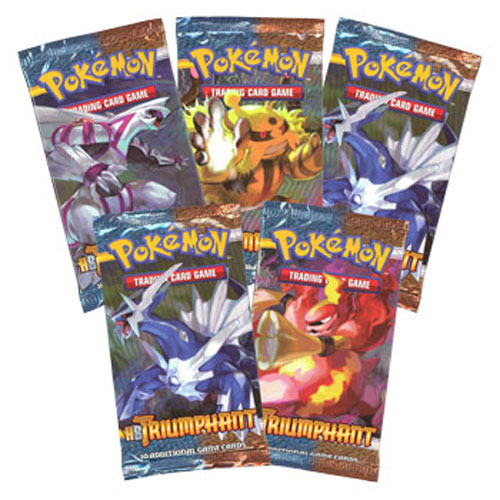
Heart Gold Soul Silver Triumphant Set
5 Packs total in this listing
10 Pokemon cards per pack.
Info from the back of the box:
The Goal of every battle, the pride of every trainer...
Battle for the excitement, for the challenge...and for the victory! In the Pokemon Trading Card Game: HS - Triumphant expansion, you'll find what you need to put triumph within your reach. Palkia and Dialga combine as an incredible Pokemon LEGEND. Machamp, Gengar, and a half-dozen other powerful Pokemon appear for the first as Pokemon Prime. New Trainer, Supporter, and Stadium cards - plus a new special Energy card - give you new strategies and deck ideas. The only thing missing is a trainer who battles to win and that's you!
The Pokemon TCG: HS-Triumphant set contains over 100 cards. Each player must have a 60-card deck of Pokemon cards to play. Recommended fr players ages 10 and up.
UPC Barcode = 820650115500
20-13110-11550
978-1-60438-101-6
Info from Pokemon Company Site:
Features of the new Pokémon TCG: HS—Triumphant expansion:
* Legendary Pokémon come back in pairs as LEGEND cards—Dialga & Palkia and Darkrai & Cresselia!
* Amazing new Pokémon Prime cards that include Celebi, Machamp, and Gengar!
* New theme decks, Verdant Frost and Royal Guard that let players send shivers down their opponents' spines while unleashing devastating attacks with incredibly powerful Pokémon!

Card
Types are the basis of all decks (which consist of 60 cards). Without them a
player cannot play the game, since both players begin the game by placing a
Basic Pokémon in the active position on the playing field. Each Pokémon card
depicts a Pokémon from the video games. Each player may have up to six Pokémon
on the playing field at a time: one “active” Pokémon and up to five on the
bench (these are considered to be in reserve, but they can still affect
gameplay). Each Pokémon card has a name, a type, amount of Hit Points,
Most
Pokémon feature attacks that deal damage to the opponent's active Pokémon, or
occasionally, their benched Pokémon; still others perform different functions,
such as manipulating players' possession of cards. The vast majority of these
attacks require Energy, which comes in the form of Energy cards, though the
occasional Pokémon may have an attack that requires no energy (these attacks
typically are weak or perform a function other than damage).
The two
types of Pokémon cards are Basic Pokémon and Evolved Pokémon. Basic Pokémon are
Pokémon that have not evolved, and can be play directly onto the Bench. Each
deck must have at least one Basic Pokémon to be considered legal. In contrast,
an Evolved Pokémon cannot normally be placed directly onto the field; they must
be played on the corresponding lower-stage Pokémon. Stage 1 Pokémon evolve from
Basic Pokémon, and Stage 2 Pokémon evolve from Stage 1 Pokémon. As a Pokémon evolves,
it gains HP and can use Energy more effectively. Baby Pokémon cards, introduced
in Neo Genesis, are a special kind of Basic Pokémon, sometimes distinguished by
a Poké-Power called "Baby Evolution." Baby Pokémon have low HP, but
their attacks have strange and sometimes very powerful effects. Baby Pokémon
with the kick ability can evolve into another Basic Pokémon, specified on the
card. When a Baby Pokémon evolves into what would normally be a Basic Pokémon,
that Basic Pokémon counts as being an Evolved Pokémon for the purposes of cards
that affect Basic Pokémon and Evolved cards differently. Variations of Basic,
Evolved, and Baby Pokémon cards have appeared in many sets, usually indicated
with a word before or after the Pokémon's name.

The
Diamond & Pearl set introduced a new type of Pokémon Card, Lv.X cards. Lv.X
cards would replace the previous EX cards. Lv.X's are considered neither Basic
Pokémon nor are they considered Evolution Cards, but simply Pokémon Cards. They
are placed on the Pokémon Card in which the name specifies (i.e.: Lucario to
Lucario Lv.X). In turn, though, Lv.X cards are not "named" cards.
That means that only 4 altogether including regular and Lv.X's are allowed.
They can also only be placed when the Pokémon is active cards,players may use
all powers and attacks on the Lvl X card IN ADDITION to the powers and attacks
printed on the card it was attached to.
HeartGold
SoulSilver replaced Lv X cards with Pokémon "Prime". Prime cards
function exactly like any other basic or evolution card, but are generally more
powerful and often have better artwork. Prime cards are distinguished by a
specific silver border foil pattern. Also introduced in the HGSS series were
Pokémon Legends. These cards depicted legendary Pokémon, however were used as a
combination of 2 cards. Initially just Ho-Oh and Lugia, subsequent set Legends
depicted 2 separate Pokémon on each set of cards such as Deoxys/Rayquaza and
Entei/Raikou. Because of this, Legend sets depicting 2 Pokémon have more than 1
Pokémon type and are worth 2 prize cards when knocked out.
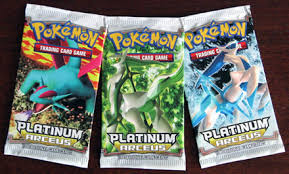
Pokémon
Black and White once again abandoned the previous sets special card (Prime) and
introduced Full art chase cards. These cards have identical stats and abilities
as other cards in the set, but have no borders, but rather feature art along
the entirety of the playing card. It has been revealed that in a set in the
near future, EX Pokémon will be reintroduced.
Energy cards
Energy
cards are attached to a Pokémon to enable it to attack. There are two types of
Energy cards: Basic Energy cards and Special Energy cards. There are eight
different Basic Energy types: Fighting, Fire, Grass, Lightning, Psychic, Water,
Darkness and Metal. Darkness and Metal Energy could only be provided through
Special Energy cards until the Diamond & Pearl expansion set, where they
became Basic Energy types. Basic Energy cards only provide one Energy of the
specified type, while Special Energy cards have additional benefits and varying
Energy provisions. Additionally, the amount of Basic Energy cards allowed in a
deck is unrestricted, while Special Energy cards follow the standard rule
restricting the number of cards with the same name in a deck to four.
Some
attacks require a certain type and amount of Energy, depending on the type of
attack and the Pokémon using it. If an attack requires Basic Energy, then that
type and amount of Energy must be attached to the Pokémon, whereas if the
attack has a Colorless Energy requirement, that requirement can be met by any
Energy card. Colorless Energy is neither a Basic nor a Special Energy type and
can be provided through both Basic and Special Energy cards. However, the
Double Colorless Energy (released as the first Special Energy in Base Set) can
count as only colorless Energy.
Trainer cards

Trainer
cards perform various functions to affect the game. Some can remove damage
counters from Pokémon, remove energy from the opposing Pokémon, or revive
Pokémon that have been knocked out. Before the Diamond & Pearl expansion,
all cards that were not Pokémon or Energy were considered Trainer cards, though
they have since been subdivided into categories: Item cards that directly
affect the battling Pokémon, Stadium cards represent custom arenas that add a
special mechanic to gameplay and Supporters represent other characters in the
Pokémon world.
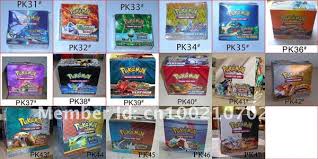
Most
Trainer cards are simply classed as Trainer: Item. The player follows the
directions on the card and then usually discards it. They were introduced from
the very beginning of the card game's history, with the Base Set. Normal
Trainer cards make up the largest number of Trainer cards by far, and can
affect any part of the game, including other Trainer cards. They are often
illustrated using computer-generated imagery, the most having been done by
Keiji Kinebuchi.

Pokémon
Tools, a subset of Trainer: Item cards, first appeared in Neo Genesis. They are
the card game's equivalent to Pokémon items, objects that Pokémon can carry
around and use at will. Which Pokémon can receive the Pokémon Tool is specified
on the card, and a Pokémon may not hold more than one at a time. Some Pokémon
Tools can stay on the Pokémon until it gets Knocked Out, whereas some are
discarded after a certain condition is met. Like ordinary Trainer cards and
Stadium cards, Pokémon Tools are illustrated in CGI, mostly by Keiji Kinebuchi
and Ryo Ueda. While Technical Machines can be considered a subdivision of
Pokémon Tools, they are worded as a separate category. These are the most
recently introduced of the current kinds of Trainer cards, starting in the
Expedition set. Technical Machines, like Pokémon Tools, are attached to a
Pokémon and either stay with the Pokémon until it gets Knocked Out, or are
discarded after a certain condition is met. However, a Technical Machine will
always have an attack as its text, and as long as the Pokémon holds the
Technical Machine, it can use the attack provided on the Technical Machine
instead of its normal attack. Illustrations for Technical Machines were once
the domain of "Big Mama" Tagawa, but they are now exclusively done by
Mitsuhiro Arita.
The first
Stadium cards were from the Gym Heroes set. They initially were all themed on
Pokémon Gyms and would benefit the Gym Leader. Later Stadium cards became
locations within the Pokémon video games and sometimes areas completely
original to the card game. Unlike other Trainer cards, Stadium cards stay on
the field once played, unless another Stadium card is played or something
happens that requires the Stadium card to be discarded. Stadium cards always
provide the same effect to each player. Stadium cards are predominantly CGI (a
few are hand-illustrated) and were once in the domain of Keiji Kinebuchi. Ryo
Ueda now illustrates most of them.

Supporter
cards were introduced in the Expedition Base Set. Normal Trainer cards themed
on Pokémon characters have since been assigned to Supporter cards instead. They
are substantially more powerful than Trainer cards, but only one can be played
per turn (as opposed to normal Trainers, which have no limit). Supporter cards
tend to interact with the deck, such as finding a card of the player's choice
from the deck and putting it in play. Because they feature Pokémon characters,
the dominant artist for Supporter cards is Ken Sugimori, who designed the
characters in the video games and anime. The illustrations for Supporter cards
are always hand-drawn.
With the
release of the first "Black and White" based TCG expansion, all
Trainer, Supporter and Stadium cards have been brought back together under the
Trainer Card designation. Each different type of card is marked as a Trainer,
then marked with a sub-type; Trainer: Item (what would have previously been a
"Trainer" card), Trainer: Supporter and Trainer: Stadium. All card
rules are the same, namely only being able to play 1 Trainer: Supporter per
turn and the Stadium rules for Trainer: Stadium.
Multi-type
cards
There are
also some cards that are two card types in one card. Examples include the
"Clefairy Doll" Trainer card in the Base Set, which can be played as
a Pokémon card, or special Pokémon that can, rather than battle, be attached to
other Pokémon as Energy cards. Certain Unown cards are both Pokémon and Pokémon
Tools.
Fossil
cards were first introduced in the Fossil expansion on October 8, 1999, though
only Mysterious Fossil was introduced then and would be the only Fossil card
until 2003, when it was joined by Root Fossil, Dome Fossil and armored fossil.
Fossil cards are counted as Trainer cards while in the deck or in the player's
hand, but when put into play, they also count as a Basic Pokémon. All Fossil
cards in play count as the Colorless type. Certain Pokémon are required to
evolve from these fossils except under special circumstances. For example,
Kabuto, Omanyte, and Aerodactyl must evolve from a Mysterious Fossil card.
Older Fossil cards were illustrated by Keiji Kinebuchi; newer ones are
illustrated by Ryo Ueda. Beginning with the 4th Japanese Black and White set,
Fossil cards are played differently. Rather than evolving from the player's
hand, a Player may look at a number of cards from the bottom of their deck and
if they find the required Pokémon may play it to their bench.

Pokémon
with more than one type were in the Delta TCG sets. These Pokémon were two
different types. They also had abnormal types. For example, a Pokémon that
would normally be a fighting type may be a fire type in the delta species. Dual
type Pokemon were reintroduced in the second HGSS set, HGSS:Undaunted, in the
form of Pokémon Legend cards.
Pokémon types
A
simplified type system was used for the trading card game. Instead of 17 types
of Pokémon, only nine exist. Seven were in the Base Set, and Darkness and Metal
types appeared when Pokémon Gold and Silver introduced the Dark and Steel
types. The types usually follow this pattern:
| TCG type | Color | Type(s) |
|---|
| Grass | Green | Bug, Grass,(Poison) |
| Fire | Red | Fire |
| Water | Blue | Water, Ice |
| Lightning | Yellow | Electric |
| Psychic | Purple | Psychic, Ghost, Poison |
| Fighting | Brown/Orange | Fighting, Rock, Ground |
| Darkness | Black | Dark |
| Metal | Silver | Steel |
| Colorless | White | Normal, Flying, Dragon | Dragon | Gold | Dragon |
- 1 Starting with the Diamond & Pearl expansion, Poison-type Pokémon in-game are now Psychic; they were previously Grass.
- 2Starting with the Black & White expansion set Dragon Selection, Dragon-type Pokémon in-game now own type Dragon; previously part of Colorless
Most
Pokémon have only one type. However, EX Team Magma vs Team Aqua introduced
Dual-type Pokémon, which have two different types. All existing Dual-type cards
have either Darkness or Metal as their secondary type, with the exception of
certain Pokémon cards with the Dual Armor Poké-Body, such as Medicham from the
EX Crystal Guardians expansion, which can have multiple types when certain
energy are attached.

Weakness
and resistance are determined by the type of the attacking Pokémon (unlike the
video game series, where they are determined by the type of the attack used).
In older sets, Pokémon that are weak to another type take twice the base damage
in an attack, while resistance decreases attack damage by 30 points. However,
starting in the Diamond & Pearl expansion, Pokémon cards state how much
more or less damage they take from an opponent’s attack if weakness or
resistance applies. If an older card is Modified-legal (meaning that there has
been a reprint in the current Modified format), use the newer card as a
reference, even if the older card is being played.
If a
Pokémon has two types, both of those types are calculated as far as weakness
and resistance are concerned. For example, if a Pokémon has weakness to two
types, and a Pokémon that is both of those types attacks, that attack will do
four times its normal damage.
The
Pokémon Platinum Base Set introduced Pokémon SP cards, a variant of trainer
specific Pokémon cards from older sets, that reintroduced the 'double damage'
weakness standard from older sets without a base number next to the type
weakness while adding an actual 'x2' to avoid confusion by newer players (ex:
Infernape SP has a weakness of 'Water x2', meaning a Water attack that deals 30
points of damage deals 60 instead). Only Pokémon SP cards would maintain this
'double damage' standard, while remaining non-SP Pokémon would simply have
normal weakness calculations. With the introduction of the HeartGold/SoulSilver
Base Set in 2010, all weaknesses on Pokémon cards revert back to taking twice
the damage, with the same 'x2' written next to each weakness. Similarly, the
second set under this block, HS Unleashed, also reintroduces the concept of
dual-type Pokémon cards- in this case, the LEGENDS cards for the three
legendary beasts of the Johto region Suicune, Raikou, and Entei. Each LEGENDS
'pair' features two of the three beasts battling together, giving each card
dual-types (ex: Suicune/Entei LEGEND being a Water/Fire Pokémon card) and
subsequently dual-weaknesses under the new 'double damage' printing (ex:
Raikou/Suicune LEGEND having "Fighting/Electric x2" weaknesses).
Sets
Main
article: List of Pokémon Trading Card Game sets
With the
release of Black and White: Emerging Powers on August 31, 2011, there are
currently 47 different Pokémon TCG sets released in English and 49 released in
Japanese. These sets have a vast range of sizes, from Fossil (the smallest at
62 cards), to Aquapolis and Skyridge (both the largest, with 182 normal cards,
182 reverse-foil cards and four box toppers - 368 cards in total). Only seven
of these sets (HeartGold and SoulSilver and all subsequent sets) are legal in
the current Modified Format, under which all major tournaments are played. A
rarely played format is Unlimited, in which all cards released in English are
legal (except oversized cards, such as large box topper cards, and banned cards
including Ancient Mew or _______'s Pikachu).
Early in
the game, sets were released in seemingly random intervals, but ever since
Nintendo took over the production of the sets, there has been a constant stream
of four sets per year, released at 2.5 to 3.5 month intervals (February, May,
August, October/November).
The
current 50 released expansions are: Base Set, Jungle, Fossil, Team Rocket, Gym
Heroes, Gym Challenge, Neo Genesis, Neo Discovery, Neo Revelation, Neo Destiny,
Legendary Collection, Expedition Base Set, Aquapolis, Skyridge, EX Ruby And
Sapphire, EX Sandstorm, EX Dragon, EX Team Magma vs Team Aqua, EX Hidden
Legends, EX FireRed And LeafGreen, EX Team Rocket Returns, EX Deoxys, EX
Emerald, EX Unseen Forces, EX Delta Species, EX Legend Maker, EX Holon
Phantoms, EX Crystal Guardians, EX Dragon Frontiers, EX Power Keepers, Diamond
& Pearl Base Set, Diamond & Pearl - Mysterious Treasures, Diamond &
Pearl - Secret Wonders, Diamond & Pearl - Great Encounters, Diamond &
Pearl - Majestic Dawn, Diamond & Pearl - Legends Awakened, Diamond &
Pearl - Stormfront, Platinum Base Set, Platinum - Rising Rivals, Platinum -
Supreme Victors, Platinum - Arceus, HeartGold and SoulSilver Base Set,
HeartGold and SoulSilver - HS Unleashed, HeartGold and SoulSilver - HS
Undaunted, HeartGold and Soulsilver - HS Triumphant, Call of Legends, Black and
White (Base Set), Black and White - Emerging Powers, Black and White - Noble
Victories, and Black and White- Next destines.

Every few
sets, new types of cards are introduced to the Pokémon Trading Card Game.
Several of these include: Dark Pokémon (Team Rocket); Owners' Pokémon and
Stadium cards (Gym Heroes); Darkness-type and Metal-type Pokémon, the second
generation, and Pokémon Tools (Neo Genesis); Shining Pokémon (Neo Revelation);
Light Pokémon (Neo Destiny); Supporter cards and Technical Machines
(Expedition); Crystal-type Pokémon (Aquapolis); Pokémon-ex (EX Ruby &
Sapphire); Dual-type Pokémon (EX Team Magma vs Team Aqua); Pokémon-* (EX Team
Rocket Returns); Delta Species Pokémon and Holon's Pokémon (EX Delta Species);
Pokémon LV.X, the separation of Trainer, Supporter and Stadium cards, and the
addition of Metal and Darkness as Basic Energy types (Diamond and Pearl); Pokémon
With Items (Mysterious Treasures); Trainer cards of which two can be played at
once (Stormfront); owner-specific Pokémon SP (Platinum), Pokémon LEGEND
(HeartGold and SoulSilver Collection), Pokémon PRIME which replace Pokémon Lv.
X ("HeartGold and SoulSilver Collection") and Full Art cards (Black
and White) These changes, along with yearly format rotations, make for a
constantly evolving game.
Play!
Pokémon
Main
article: Play! Pokémon
In
addition to the collectible aspect of the card game, The Pokémon Company
International (formerly known as Pokémon USA) has also created Play! Pokémon,
formerly known as Pokémon Organized Play (POP), which is in charge of the
organization of an official League program, where players can battle others in
local environments and earn player points, two-card booster packets from a
promotional set, badges, stickers and other materials. These are run by League
leaders and owners. POP also runs a professor program, in which individuals age
18 or over may become a professor, who can sanction and run tournaments and
leagues.
A League
Leader may assist in organizing the league, while a League Owner is the one
officially in charge of the league, reporting to the Organized Play program any
results and/or problems every seven weeks. The leagues run in yearly cycles,
based on a certain aspect of one of the Pokémon Game Boy or DS games: the
current cycle is based upon the Energy types.
Prerelease
tournaments are organized just before each set is released. Usually, they are
run on the two weekends before a set is released in stores to the public. At
prereleases players are given booster packs from the judge and must construct a
40 card deck, with only 4 prize cards, using only the cards pulled from the
packs and the judges provide the energy, but not special energy cards.
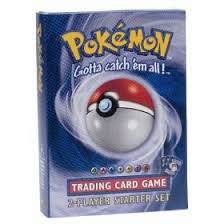
Many fans
have come up with alternative methods of playing the Trading Card Game. Certain
websites such as PokéCap are dedicated to providing players with a new twist to
their card game with new game rules they can follow. New methods may be based
more on the video game adaptations of Pokémon or the Pokémon television show.
Tournament play
Players
in a tournament are split into three age categories: Junior (born in 2000 or
later), Senior (born in 1996-1999), and Master (born in 1995 or earlier). These
tournaments play a number of rounds, where players will play a standard game
against each other and wins and losses will be recorded. In most tournaments,
there are a number of Swiss-style rounds where players are paired up against
others of similar win/loss ratios, usually from their own age group (this does
not always occur in smaller events, though). Afterwards, there will either be a
cut of the top record-holders (usually the top 25% of an event) where players
will play best two out of three matches, and the loser gets eliminated
(standard tournament bracket style), with an eventual winner.

POP runs
a season for these tournaments, which allows players to earn larger prizes and
play in a more competitive environment in comparison to League. These range
from City and State Championships, all the way up to the Pokémon World
Championships, the single invite-only event of the year. Players can earn
invites to the World Championships by winning or ranking high at National Championships,
having a good Premier Rating (based on the Elo rating system, which allows
players to win or lose points at any Battle Roads or higher-level event), or by
qualifying in the Last Chance Qualifier. The World Championships is a two-day
tournament, with one eventual winner in each age group; the winner of the
Masters Division age group is generally noticed as the best player in the world
for that season.
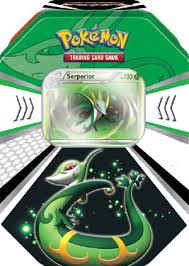
Some of
these methods are only used in the USA, as PUI and POP are based in the USA,
but they are represented by local distributors who provide the Organized Play
program to their own country.
Decks in
Competitive Play
This
section may require cleanup to meet Wikipedia's quality standards. (Consider
using more specific cleanup instructions.) Please help improve this section if
you can. The talk page may contain suggestions. (July 2010)
Over the
different generations, and tournament formats, there have been several main
stars when it comes to decks. During the first and second generations, the
Haymaker deck consisting of Hitmonchan, Electabuzz, Magmar, and sometimes
Scyther. Ideally, it would start with one of those three Pokémon, then one
would play Trainer and Energy cards to get the upper hand. In the current
format "TyRam", "Zekrom/Eelektrik",
"Celebi/Mewtwo/Tornadus", "Durant", "Thunderdome"
and "Chandelure" are a few decks currently being used in competitive
play, each with varying strategies, advantages and disadvantages. Information
of up to date and recent decks can be found on most Pokemon websites, such as
heytrainer.org, thedeckout.com or sixprizes.com.
Competitive
play features card rotation, in which certain cards become unusable in
competitive play. This is done by series, and forces players to mix up their
stratagies. This has the biggest impact of removing trainer cards, which are
just as big of a focus as pokemon in competitive play. A notable example being
the Gust of Wind card, which swapped the active pokemon of the opponent with a
pokemon on their bench of the user's choice. This card was wildly popular, but
once it was removed players had to modify their decks. A card was later
released with the same effect only titled Pokemon catcher, and this card is
seen in nearly all competitive decks today.
Major
tournaments under Wizards of the Coast
Tropical Mega Battle
On August
26–27, 2000, forty-two Pokémon trainers from around the world met at the Hilton
Hawaiian Village in Honolulu for the Tropical Mega Battle, an international
communication event for the Pokémon Trading Card Game. The Tropical Mega Battle
brought together children aged 14 and under from the United States, Japan,
France, Italy, Canada, Spain, Germany, the Netherlands and the United Kingdom,
for two days in Honolulu, Hawaii. Children participating in the Tropical Mega
Battle received invitations through Qualifier tournaments, DCI rankings, and
other events in their respective countries.
Events
throughout the weekend included competitions facilitated by translators for
groups of children representing two different languages in each group; a group
photo and an opening ceremony featuring remarks from Hawaiian government
officials; and a harbor cruise awards ceremony for the winners of the World
Communication Match. Jason Klaczynski, 14-year-old Orland Park, Ill., resident,
was honored as the Master Trainer of the Tropical Mega Battle after winning the
final round of the World Communication Match against fellow Pokémon trainer
Toshiya Tanabe of Sapporo, Japan.
Super Trainer Showdown
The Super
Trainer Showdowns were large Pokémon TCG tournaments held in the United States
by Wizards of the Coast between 2000 and 2001. The tournaments were open to the
public. Each tournament consisted of three age groups; 10 and under, 11 to 14
years old, and 15 years old and over. Each Super Trainer Showdown was preceded
by a series of Qualifier Tournaments held in cities around the United States
and abroad in which players in the 11-to-14 and 10-and-under age groups could
win trips for themselves and a parent or guardian to the Super Trainer Showdown
event. To date, there have been four Super Trainer Showdowns.
The first
Super Trainer Showdown was held in Long Beach, California inside of the cruise
liner, the Queen Mary on July 22, 2000. The format was unlimited, meaning that
all Pokémon cards released in the United States were legal for deck
construction. The winners were Joseph Viray, Jack Savage, Wesley Hsu, and
Andrew Marshall.
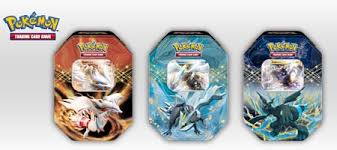
The
second Super Trainer Showdown was held at the Meadowlands Exposition Center in
Secaucus, NJ on November 18, 2000. There were over 700 players in all three age
divisions competing for the title. The tournament was eight rounds of Swiss
style pairings followed by a cut to a top-eight single-elimination playoff. All
games were best-of-one. The format was titled “15/3” in that you were allowed
to construct 60-card decks using only fifteen “Trainer” cards and only three of
any one card, save basic Energy Cards. Jonathan Brooks, Rudy Rodriguez, Wesley
Hsu, and Tom Hanley were the event champions.

The third
Super Trainer Showdown was held again in the Meadowlands Exposition Center in
Secaucus, New Jersey. It was held on June 23–24, 2001 and more than 1,600
players attended the event. The format for this event was titled “Modified” and
allowed players to construct 60-card decks using a maximum of four of any card
other than basic energy from the sets Team Rocket, Gym Heroes, Gym Challenge,
and Neo Genesis. The card “Sneasel” from the Neo Genesis set was banned from
play. The event ran for 2 days, with 3 champions name each day. Paul Lamancusa,
Jonathan Brooks, Josh Goldstein, Phil Mondiello, Tom Liesegang, Jeremy
Borchardt, Wesley Hsu, and Tom Hanley were the winners.
The
fourth and final Super Trainer Showdown was held at the San Diego Convention
Center in San Diego, California on December 1–2, 2001. The format was again
"Modified", however the newest set Neo Discovery was also legal for
the tournament. The card “Sneasel” was again disallowed from play. This year's
champions included Michael Perucca, Eric Brooks, David Bui, Seena Ghaziaskar,
Robert Frac, Wesley Hsu, and Matthew Moss.
Competitive
play outside of the United States
Although
TPCI tries to keep Organized Play as equal as possible all over the Earth,
there are some notable differences in how POP is run outside of the USA.
Pokémon Card Laboratory (PCL)
The
Pokémon Card Laboratory (PCL), located in Japan, is the designer of new cards
and the ultimate authority on any matter relating to the Pokémon Trading Card
Game. It can declare rulings on any in-game circumstance, issue errata, change
card text after publishing, and change the basic game rules, although the
latter three rarely occur. PCL runs Organized Play in Japan.
Pokémon
in the UK
Pokémon
TCG retail distribution in the UK is currently run by Esdevium Games Ltd, and
Organized Play by D & A Games from 2007 until 2009. In August 2009, control
of OP was given to long time UK Judge and Tournament Organizer Ian
Fotheringham. The UK has one of the largest player bases outside the United
States and Japan. Its players have performed admirably over the past few years
at the World Championships, including a 4th Place for Fares Sekkoum in the
10-division (2006), a Top 16 place for Jake Arnold in the 10-division (2005) a
7th Place for Sami Sekkoum in the 15+ (2005), a Top 16 finish for Yacine
Sekkoum in the 15+ (2006) and a Top 16 10th place finish for Faisal Khan
("Freddy-K") in the 15+ (2005).
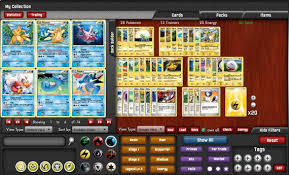
Held in
May 2008, the UK Pokémon TCG National Championships was held in London, a much
more popular choice of venue location for the majority of players who were
mainly based in the South East of England. In 2006 around 70 players were
invited to play in each age group, with approximately 55 players per division
in 2007. The prizes have included Nintendo DS consoles, televisions and invites
to represent the UK in the World Championships. The 2008 UK Nationals was the
first event of its kind in the country to be open to all players and required
no qualification for entry. The 2009 UK Nationals was held at Kempton park on
the 16th May 2009 with a high 180 attendance. Sami Sekkoum won Masters again,
and newcomer Samuel McLewee took 2nd in the seniors at his first Nationals.
Also new for the 2008/09 Season was the UK Battle Royale events. However it is
unlikely these will return for the 2009/10 season.
Smaller
City Championships, and for the first time in 2006 UK Pokémon Regional
championships, are held between November and April. These were held in Hull,
London, Bournemouth, Manchester and Glasgow.
Banned cards
A few cards were banned from both general play and Modified Format under Wizards of the Coast.
- Sneasel
- The first card that was banned was Sneasel from the set Neo Genesis. Decks with Sneasel were winning almost every major tournament, making all other decks uncompetitive. Sneasel's ability to use the new Darkness Energy cards (which increase the power of all Dark-type attacks by 10), no weakness, a free retreat cost, quickly powered-up attacks, and the ability to do enormous damage made it an outstanding card. In short, Sneasel was faster and more powerful than any other card in the game at the time. It was banned beginning with the 2001 Super Trainer Showdown. WotC produced giant Sneasel cards for the event with "Banned at the STS" printed on them. Sneasel was reprinted in HS Undaunted, featuring changes to weakness and resistance. It is no longer illegal.
- Slowking
- Coincidentally enough, the only other banned card printed in a normal set was also from Neo Genesis. Slowking from Neo Genesis had a Pokémon Power that allowed its user to flip a coin whenever the opponent played a Trainer card, and if that coin was heads, the Trainer card would return to the user's deck without affecting the game. In the Japanese version of the game, this Power could only be used while Slowking was active. When the card was translated to English, however, it was translated incorrectly. The English version of the card not only allowed its owner to use the Power while Slowking was benched, but the power was cumulative, meaning players could flip a coin for each Slowking they had in play every time their opponent played a Trainer card, and if even one were heads, that card would have no effect. While the Japanese version of the card was barely playable (Slowking is not a good attacker, and is easily KO'ed when active), the English version was too powerful because a player could place one or more Slowking on the bench, prevent the opponent from playing any Trainer cards, and still play a stronger Pokémon as the active Pokémon. Slowking dominated the 2002 World Championship (the only World Championship not run by PUI) and, as a result, WotC announced that the card was no longer legal for any format as of January 1, 2003.

The banned "Birthday Pikachu" card.
- _________'s Pikachu
- _________'s Pikachu (commonly known as "Birthday Pikachu") was Promo Card number 24 printed by WotC. The effect of its attack, Birthday Surprise, says, "...if it is your birthday, flip a coin. If heads, this attack does 30 damage plus 50 more damage...". WotC banned this card quickly after its release, because there was no quick, easy way to check that it was actually someone's birthday whenever he or she attacked with the card. Disproving liars who wanted to do a lot of damage for a few energy turned out to require much more effort than it was worth. The Japanese version of the card has red text in the margin stating its illegality. It is one of the few Japanese cards with this message that was produced in English, most likely because of its immense popularity with collectors.
-
Ancient Mew
Ancient Mew
was a banned card because of its alternate background. It has no real attacks
or Pokémon Powers that would make it broken, as it has a mere 30 HP and does 40
damage. The card's "ancient" runic writing, which confused players
and lack of an easy translation method contributed to its banning. Despite the
fact that it is a foreign card, it is not considered a foreign card in the
Unlimited 2009-2010 Pokémon modified format.
The bans
that WotC placed were removed when Pokémon Organized Play took over the game.
Their only limitation is that cards must have the normal English or Japanese
card back to be playable. In addition, the cards printed in the promotional World
Championship Decks are not allowed in any competitive events. These cards are
supposed to be printed as promotional items and are not meant to help people
collect the large numbers of rare and valuable cards that were played in these
decks.
Media Release
Burger Kings
world wide sold BK Meals with Pokémon toys that are a total of 12 cards and
accessories combined. Announced on June 10, 2008, the toys were released at
participating Burger Kings on July 7, 2008.
In 2011,
McDonald's released a set of eight toys (not all were released outside of North
America) and twelve cards, featuring Pokémon from the Pokémon Black and White
era of the TCG.
As an
interesting point, a misprint in 2002 by WotC caused the English translated Mew
to halt in production, only several were produced but it was banned as a
precaution. This was later remedied and the misprinted card was branded as a
collectible. It had only participated in one minor tournament.
Pokémon Trainer Challenge
| Pokémon Trainer Challenge |
|---|
| Platform(s) | Internet browser |
| Release date(s) | April 2011 |
| Genre(s) | Trading Card Game |
| Mode(s) | Single-player and Multi-player |
Pokémon Trainer Challenge is an online browser game based on the Pokémon Trading Card Game.The game initially offers three starting decks, and features more content after release. After April 6, players can buy cards from the Black and White series, which will have a code to be digitally represented.Players can also create a custom avatar. There are now booster pack codes, special items, and booster packs.
GamesRadar praised the game, stating "Everything looks to be faithfully recreated, including the card mat, prize card layout, and even coins







